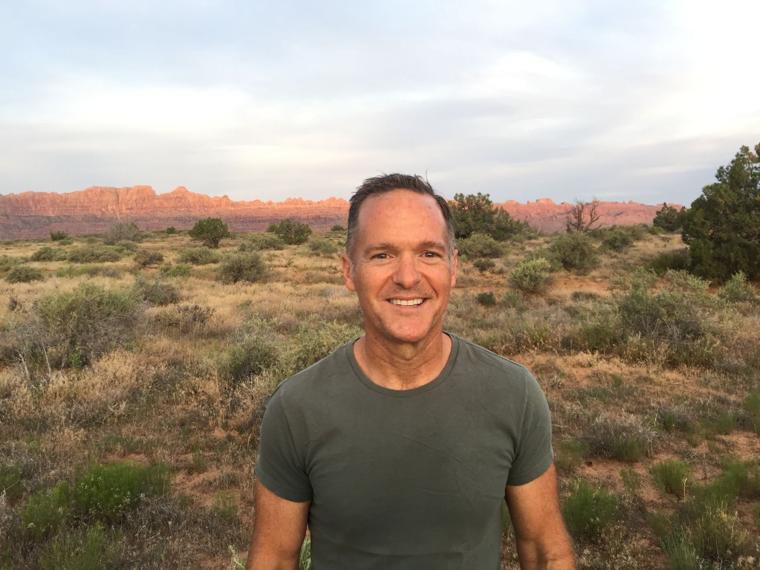Some information may be outdated.
We come to Moab to live the dream of life among the cliffs and canyons of this Colorado River town. Lately the dream has hit a roadblock: there’s nowhere to live. Once you’ve graduated from your tent and RV, chances are you won’t be able to find a place to rent or even buy.
Our little town is experiencing a housing crisis, not just for affordable housing, but for housing of any kind. Our county planners think the problem is that land is too expensive, and the answer is to build 25 or 35 apartments per 1-acre lot. The initial reaction from most people goes something like this: “We need more housing, but please don’t put that anywhere near me.”
Where do you put these 25 or 35 apartments per 1-acre lot? Put them where no one is going to complain too much, so that’s exactly what our county planners did. The so-called “high density overlay” advocates a strip of three-story apartment buildings all along the full length of U.S. Highway 191 from Moab south to the San Juan County line.
Who wants to live along a highway? Do you? Who comes to Moab for the vast open spaces, to hike, to bike, to rock climb, to Jeep, to raft, then settles in each night in a three-story apartment building along one of Utah’s busiest highways? Pretty much no one chooses to live on our desert highway.
First of all, it’s not healthy to live along a highway. Multiple studies have shown that living next to a highway increases one’s chances of developing respiratory disease and other ailments. Do you want to raise your family between a natural gas pipeline and a high-voltage power line?
Here’s how the idea plays out. First, people complain about the highway noise and demand those huge concrete barrier walls. Then, no one can cross the highway, so they demand bridges to get to the other side. This is no way to create a neighborhood.
If we aren’t going to build three-story apartment buildings in my neighborhood, and we aren’t going to squish everyone in three-story apartment buildings along U.S. Highway 191 either, then where are we going to put our newest residents?
The answer is we are going to create new neighborhoods. The Grand County General Plan calls them “Rural Centers,” and identified the first one at the intersection of Spanish Valley Drive and Spanish Trail. We’ll create the second Rural Center at the new Land Trust’s Arroyo Crossing. Each Rural Center will have a small collection of neighborhood retail stores like a coffee shop, convenience store, restaurant, hair salon, dentist, chiropractor, reiki practitioner, exercise studio and tattoo parlor centered around a park and playground. Let’s give the entrepreneurial spirit a place to flourish. Kids can play while dad drinks his latte, and mom trades climbing tips. Surrounding the center are two-story apartments, townhomes and small houses, totaling around 200 units. Each Rural Center has a direct road to U.S. Highway 191, to keep the fast traffic on the highway.
What are we going to do with the land along U.S. Highway 191? That’s our commercial corridor, and here we will nurture our strategy of economic diversification. Our gift is our connection to the Earth, so let’s focus on new businesses that unleash the craft of our hands, things like woodworking, welding, ceramics, and creating outdoor recreation products.
Before we encourage new development along U.S. Highway 191, we must plan for the future with the goal of keeping the highway traffic moving at 65 mph so we don’t end up with the traffic jams we have north of town. We plan by creating frontage roads on both sides of U.S. Highway 191, then limit highway access to one entrance every mile. This creates a safe, flowing highway and allows for the development of small businesses all along the frontage roads. We maintain the wide natural space on each side of the highway, so the view and experience of driving into Moab is a pleasant one, not a canyon of concrete barrier walls.
We need housing. We need a place for economic diversification. Let’s create wonderful new neighborhoods in Spanish Valley, where you can jump on your bike and take off to anywhere. No one wants a life on a desert highway.
Michael Liss is Chair of the Moab Transit Authority Study Committee, entrepreneur, and avocational archaeologist who discovered the Fibonacci Spiral at the heart of Chaco Canyon.
Appreciate the coverage? Help keep local news alive.
Chip in to support the Moab Sun News.



